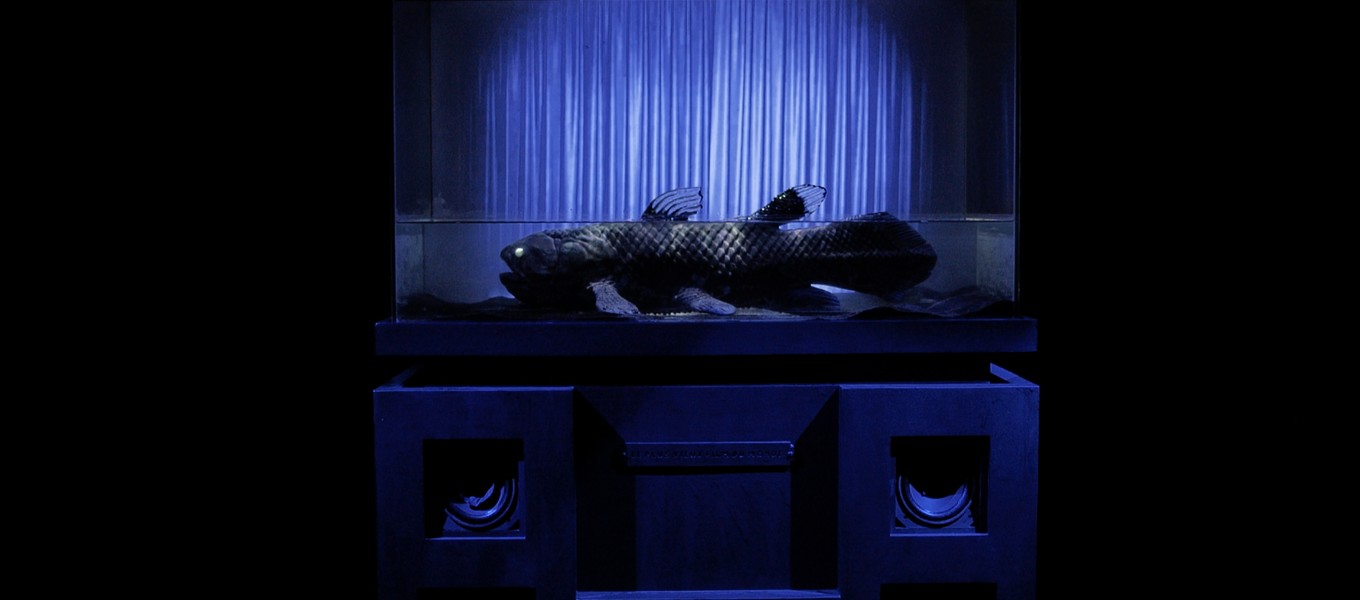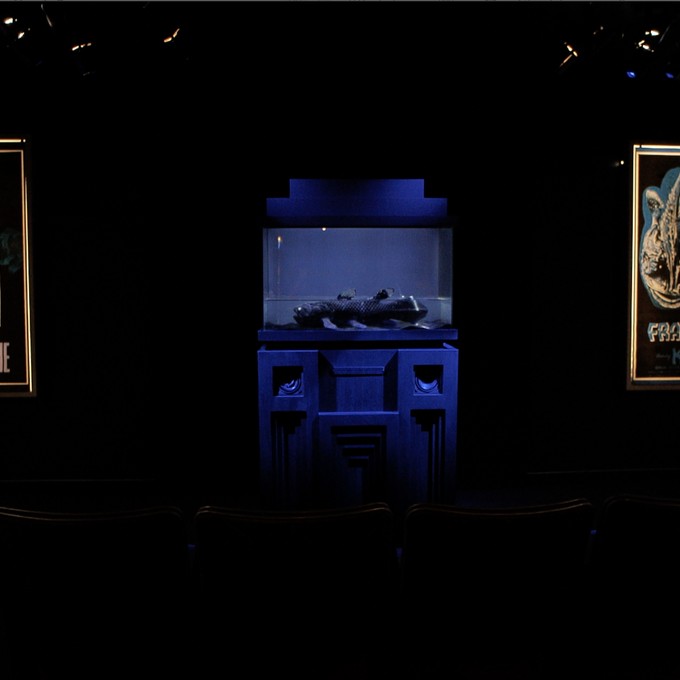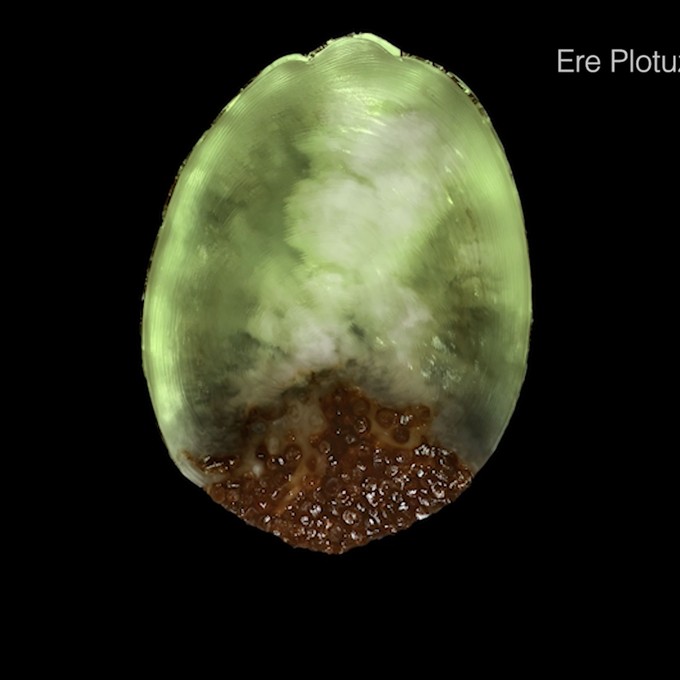Éléonore Geissler
Le plus vieux film du monde - Installation - 2023
presented as part of the exhibition Panorama 25



I have hypothesised here that the filmic device is not a human invention, that it originates with one of the oldest living marine species, whose origin dates back 400 million years.
The story I'm telling plays with reality and fiction. In 1938, a museum keeper, Marjorie Courtenay-Latimer, discovered an unidentified fish off the east coast of Africa. It was the coelacanth, a species thought to have been extinct since the Denovian era.
An ichthyology laboratory discovered that the photosensitive scales of the fish recorded images. Read like film stock, superimposing them at 12 scales per second, they have made it possible to reconstruct the world's oldest movie.
In the installation, the object of the aquarium itself becomes a kind of optical theatre, a dialogue takes shape between the film format, the aquatic environment and the ghostly, shadow presence of the fish.
Éléonore Geissler
Born in 1992 in Paris, where she lives and works, Éléonore Geissler is a multimedia video artist who graduated from the Beaux-Arts de Paris in 2017 and from the École des Arts Décoratifs de Paris (with distinction) in 2018. Her work is based on drawings whose black humour she uses as a starting point for the researches in her videos. Oscillating between installation and film format, she employs a variety of live film and animation techniques: when it comes to tricking the viewer’s eye, it seems, anything goes.
